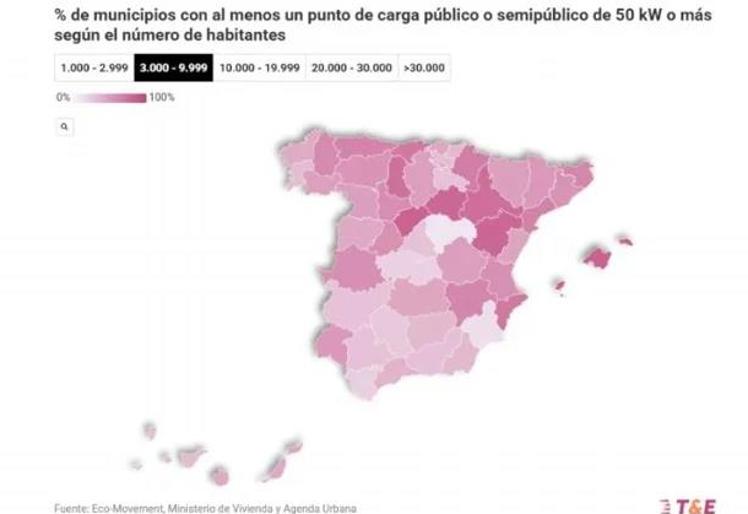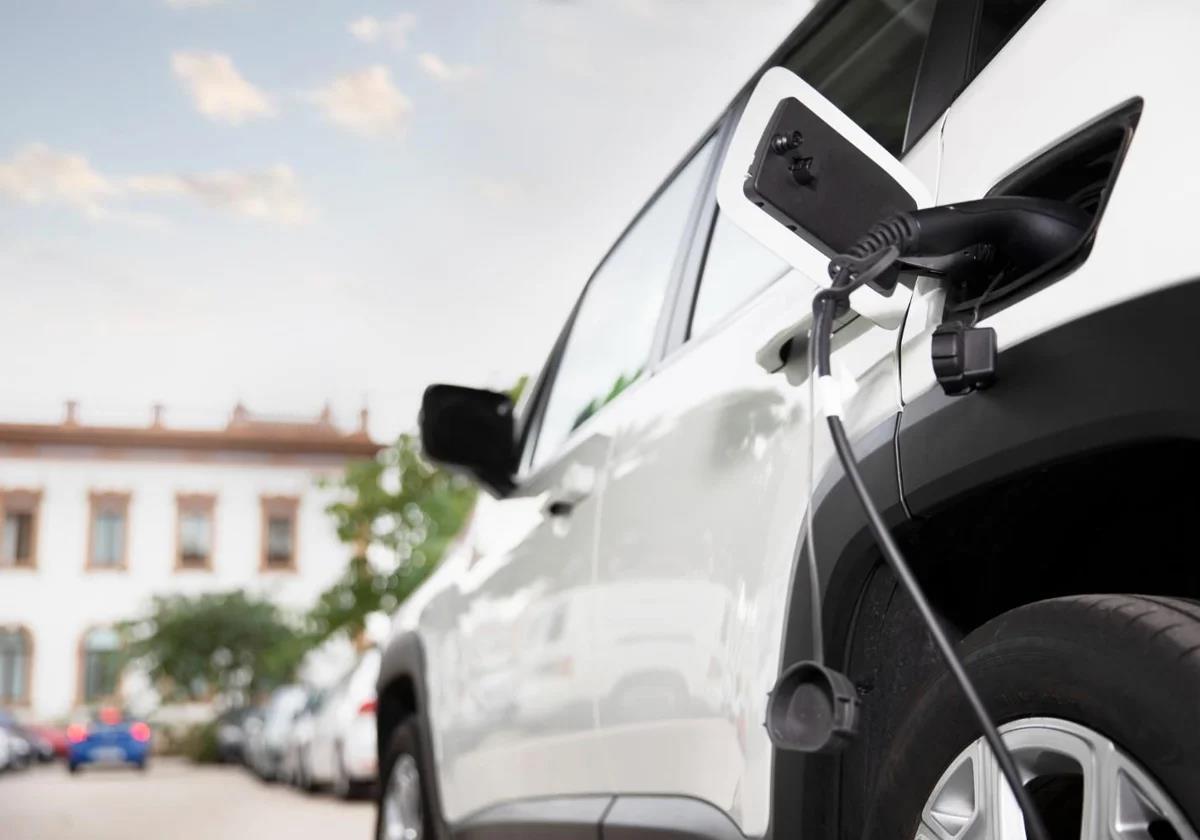Wednesday, 30 July 2025, 19:37
The charging infrastructure for electric vehicles in Spain is undergoing a remarkable expansion. A report by Transport & Environment (T&E), which analyses compliance with the European alternative fuels infrastructure regulation (AFIR), concludes that 54.5% of Spanish municipalities with more than 3,000 inhabitants now have at least one fast charging station (50kW or more).
This figure reaches 78.6% in municipalities of 10,000 inhabitants or more, demonstrating a clear improvement in the coverage and visibility of the technology.
The study, which aims to determine whether the fear of a lack of charging points, known as ‘range anxiety’, is well-founded, shows an encouraging picture.
If normal and semi-fast charging points (equal to or greater than 7kW), usually found in supermarkets or leisure centres, are also considered, 94.6% of Spanish municipalities with 10,000 inhabitants or more have at least one charging point.
In addition, there are already more than 3,000 ultra-fast charging points (15kW or more), distributed in 399 municipalities. This type of charging is crucial to meet the requirements of the AFIR regulation, which mandates deployment every 60 kilometres along the Trans-European Transport Network (TEN-T).

Colour-coded map of the number of recharging points.
T&E

Expert in electric transport at T&E Spain Óscar Pulido said that it is important for Spain to present its national action framework (NAP) before the end of 2025 to define a strategy adapted to the reality of the country, including tourist areas and demographics.
The business association for the development and promotion of electric transport (AEDIVE) confirmed the positive trend. According to data compiled from national operators, the network of operational public charging infrastructure in Spain stood at 47,519 points in the first half of 2025, representing an increase of 4.71% compared to the end of 2024. High-power points have experienced the greatest growth: those between 50 and 250kW have risen by 64.07%, while those over 250kW have increased by 53.71%. Fast charging points (from 22 to 50kW) have also increased by 21.34%.
CEO of AEDIVE Arturo Pérez de Lucia predicts that “if this remarkable rate of infrastructure installation continues, we could end the year with around 55,000 public access charging points in operation”. Catalonia, Andalucía and Madrid remain the regions with the highest number of charging points.
This consolidation of the charging infrastructure, especially in interurban areas with high-power points, is essential to facilitate long-distance travel in electric vehicles and to continue driving the transition towards more sustainable mobility in Spain.
